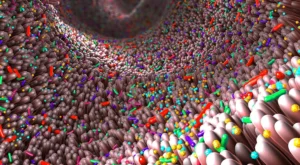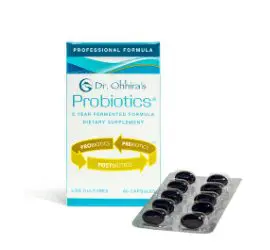By Ross Pelton, RPh, PhD, CCN
Scientific Director, Essential Formulas
Cesarean section deliveries can be a life-saving intervention when a vaginal delivery is too dangerous. However, these days many women request a C-section delivery for non-emergency reasons such as convenience and/or avoidance of delivery-related pain. While the rate of C-section deliveries has risen dramatically in the past several decades, most women don’t realize that a C-section delivery can compromise an infant’s immune system for life.
In the United States, the rate of C-section deliveries has nearly doubled since 1996, reaching a level of 32% in 2017.i This increasing trend is also seen in many other parts of the world, with rates in some Latin American countries exceeding 40%.ii
An infant’s exposure to a mother’s vaginal microbiome provides the initial “seeding” that is responsible for creating her infant’s microbiome. Yes, we get our microbiome from our mother.
A vaginal birth delivery if often called an infant’s “bacterial baptism” because passage through the vaginal canal provides the infant with a large exposure to beneficial probiotic bacteria. Thus, infants who are delivered via C-Section miss this initial, critical exposure to beneficial bacteria.
Some of the bacteria from the mother’s vaginal microbiome enter the infant’s mouth and travel down the intestinal tract. As these bacteria proliferate, they become the predominant bacteria in the infant’s microbiome. Thus, it is imperative to realize that a vaginal delivery is absolutely essential for the creation of a healthy microbiome for the infant.
With a standard vaginal delivery, the vast majority of the infant’s initial bacteria are beneficial bacteria received from the mother. With a C-section delivery, the infant gets exposed to many different strains of bacteria, including those from the hospital and hospital employees, which are of course, vastly different from the bacteria that reside in the lining of the birth canal.
During the first six months of life, one of the primary functions of the infant’s microbiome is to train the infant’s immune system. Consequently, an infant’s initial microbiome is the foundation for long-term health. However, the unfavorable bacterial population that develops in the GI tract of a baby delivered via C-section substantially compromises the development of that infant’s immune system.
Many studies have reported that infants delivered by Cesarean section have a higher risk of developing many diseases than their vaginally delivered counterparts. In particular, epidemiological studies have linked Cesarean delivery with increased rates of asthma, allergies, autoimmune disorders, and obesity.iii
Other risks associated with C-section births include infant lethargy due to general anesthesia given to the mother, fetal injury during delivery, increased likelihood of respiratory distress, and breastfeeding complications. Infants delivered via C-section also have increased risks later in life to diseases such as type 1 diabetes, Crohn’s disease, and multiple sclerosis.iv
Dr. Ohhira’s Probiotics to the rescue
When I consult with a woman who has had a Cesarean section delivery, I emphasize the importance of administering probiotics to the infant as soon as possible. This allows beneficial bacteria to start colonizing, which encourages the development of a healthy infant microbiome. And, the probiotic I always recommend is Dr. Ohhira’s Probiotics.
I instruct mothers (or fathers) to puncture/bite open a capsule of Dr. Ohhira’s Probiotics and squeeze the contents out onto their clean fingertip. Then, carefully rub the paste around the inside of the infant’s mouth. This will enable the Dr. Ohhira’s paste to travel down the infant’s intestinal tract and begin promoting the growth of a healthy microbiome. Dr. Ohhira’s Probiotics, which contain over 500 postbiotic metabolites, will be much more effective than simply giving the infant probiotic bacteria contained in other formulas.
Dr. Ohhira’s Probiotics deliver probiotics, prebiotics and postbiotic metabolites. That’s THE DR. OHHIRA’S DIFFERENCE.




